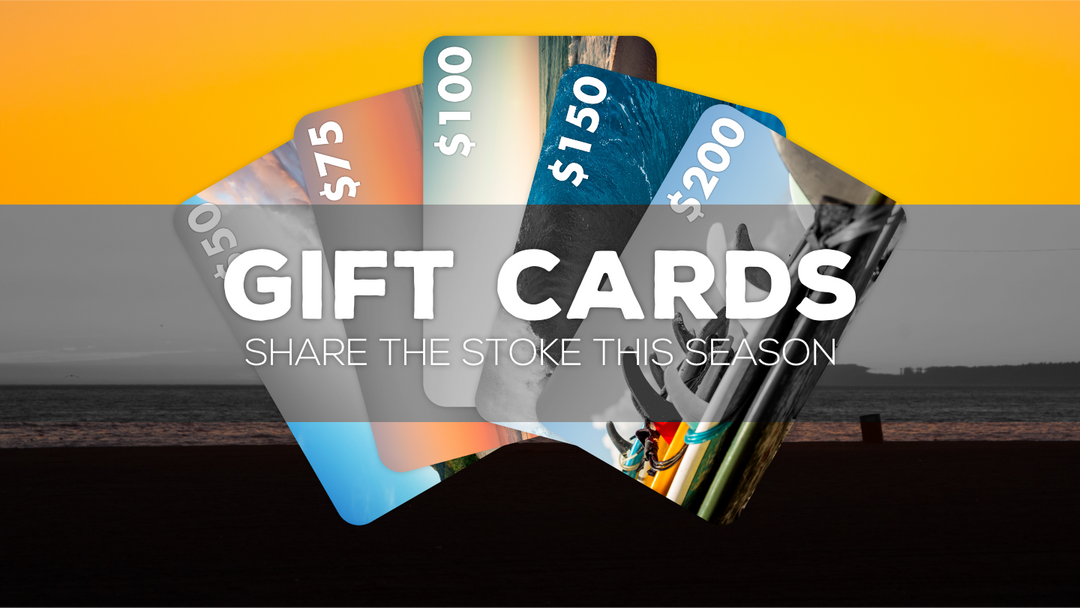Legends: RICK STONER
Rick Surfboards (1964)
Rick Stoner was born in San Diego, California in 1937 and grew up in Hermosa Beach. His life as a lifeguard, surfer and surfboard builder paralleled that of his good friend and former business partner Bing Copeland. Both were Los Angeles County lifeguards, both became accomplished surfboard designer/shapers, and both were mentored by the late Dale Velzy in the early '50s.
In September of 1955, Rick first went to Hawaii with Bing, Sonny Vardeman, Mike Bright and Steve Vorhees. They were lured there by stories from Velzy--who had been surfing on Oahu in 1950 and '51--about bigger waves and warmer water. The five friends first lived in a small Quonset hut near Makaha Point, but their savings quickly dwindled to nothing. So how do a couple of California surfers--who have no money and want only to go surfing every day--get by? Enlist in the military and get stationed in Hawaii, that's how! In early '56, Rick and Bing each signed up for two-year stints in the U.S. Coast Guard aboard the cutter Bering Strait out of Honolulu. Sonny Vardeman and Steve Vorhees joined the navy but were stationed on the mainland.
When Rick and Bing were discharged in late 1957, both went back to lifeguarding on the beaches of Southern California. But the allure of riding waves in faraway places got the best of them and in a few short months, the pair found themselves on a 42-foot sailboat bound for the South Pacific. On November 27, 1958, they sailed into the harbor at Auckland, New Zealand.
They quickly befriended members of the Piha Surf Club and spent the next two months surfing and paddleboarding with them. Anxious to somehow compensate club members for their hospitality, Rick and Bing built them a total of eight Styrofoam and epoxy surfboards--the first foam surfboards ever built in New Zealand. The days of hanging around Velzy's shop in Manhattan Beach, California had paid off; armed with at least some shaping experience and using makeshift tools that included a cheese grater, Rick and Bing made obsolete the 14-foot hollow wooden boards the Piha Surf Club members had been riding. A plywood stringer was sandwiched between Styrofoam panels to make each blank. The blanks were shaped and then glassed using epoxy resin.
In February of 1959, the pair returned to California and took up lifeguarding once again. By October of that year, they were in business together, opening Bing and Rick Surfboards on the strand in Hermosa Beach. Just one year later, Rick was planning to get married and in anticipation of added responsibility, decided that making surfboards was not the way to make a living. Bing Copeland bought out Rick's interest in the business and launched Bing Surfboards.
Rick continued lifeguarding full time and moved up through the ranks of the Los Angeles County Lifeguards organization, eventually earning the rank of lieutenant. In 1961--while still working as a lifeguard--he started Rick Surfboards. In 1966, his company produced two well-known signature models--the Dru Harrison Improvisor and the Barry Kanaiaupuni model. The Improvisor was introduced after Harrison won the Swami's Pro-Am (first place prize money was a whopping $500!) and placed eighth in the World Championships. Kanaiaupuni, whose powerful, aggressive surfing style was especially well suited to the shorter and narrower "pocket rocket" boards of the late '60s and early '70s, actually shaped at Rick Surfboards for a short time beginning in 1967. Rick Surfboards expanded by opening operations on the East Coast and Hawaii and was the first name to export surfboards on a large scale to Peru.
While many of the surf shops that dotted California's Pacific Coast Highway in Los Angeles County went out of business in the late '60s, Rick Surfboards did not. Because his business was financially sound, Rick was able to sell it, which he did--to the Hamilton brothers in 1974. But with little experience in surfboard manufacturing, the business was soon in trouble. In 1980, Phil Becker, Dave Hollander and Steve Mangiagli bought the struggling business and Becker Surfboards was born. Becker was Rick's primary shaper from about 1963 until 1980, while Hollander had been a glosser and Mangiagli a glasser for Rick. John Leininger, who was Rick's sales manager, joined the Becker team to head up retail operations.

Sadly, Rick Stoner's life was cut short in 1977 by a brain tumor. Considering all he did as a lifeguard, surfboard builder and businessman, he most certainly deserves recognition as a great human being and a true pioneer of our sport. As Bing Copeland once said following Rick's death, "Rick was the most generous and caring person I've had the pleasure to be associated with."






